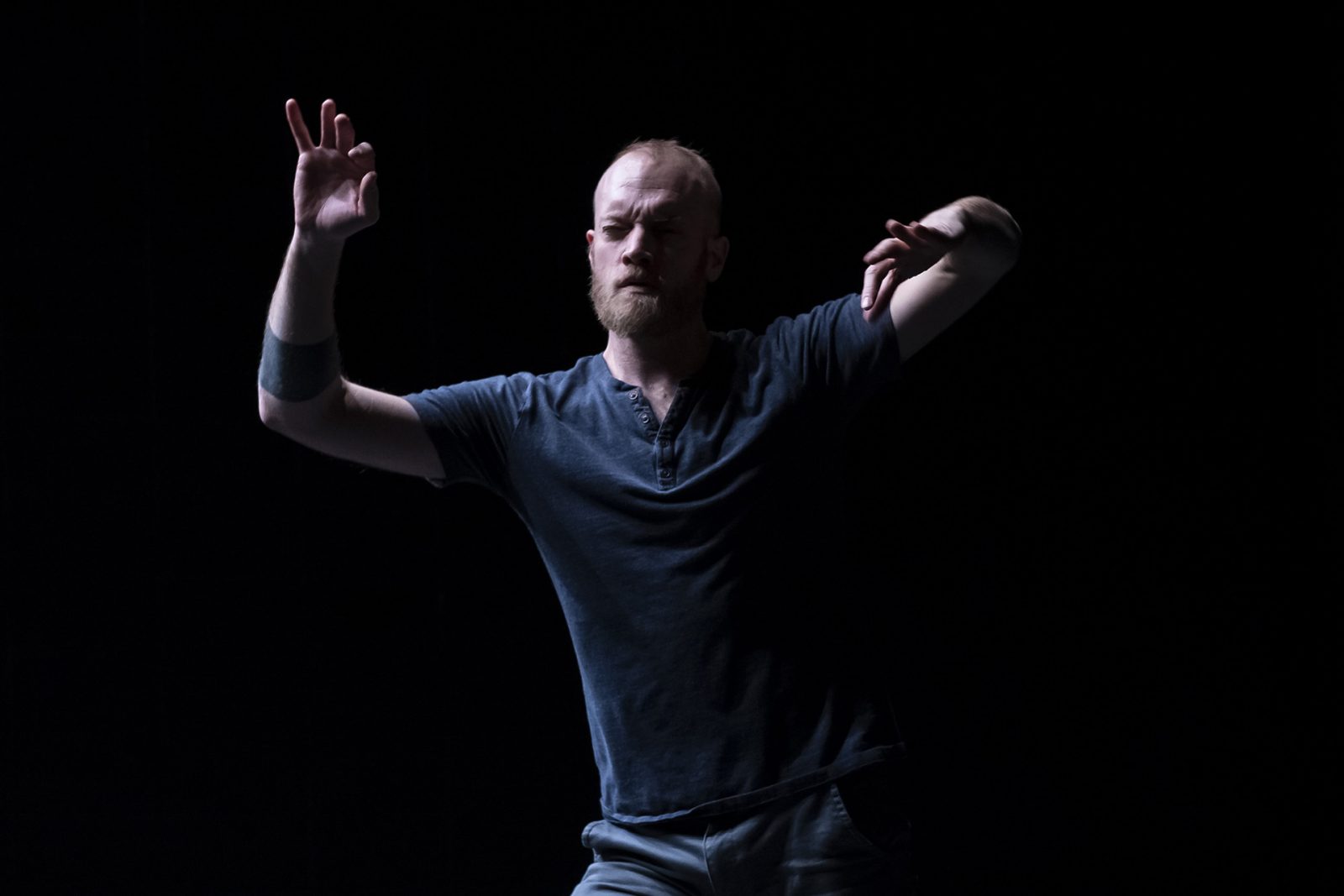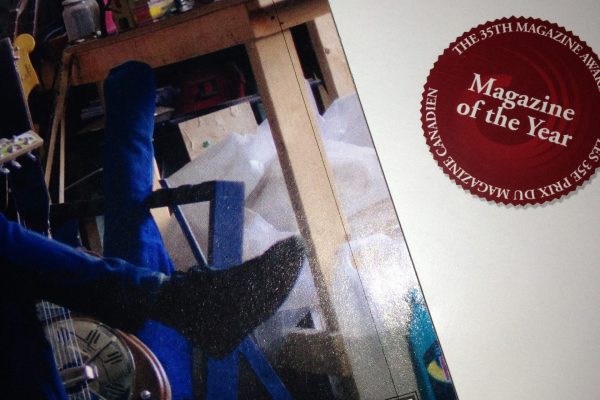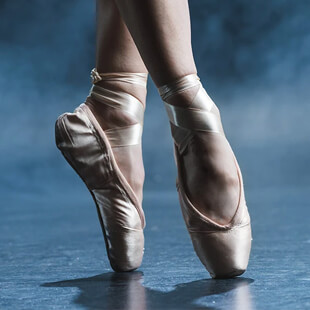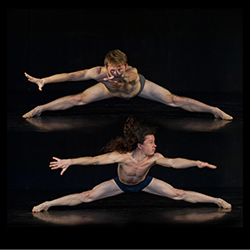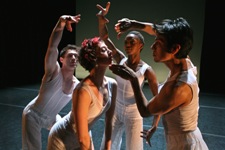18 P_R_A_C_T_I_C_E_S is playing at the Théâtre La Chapelle from Feb. 16-19, 2022.
It should come as no surprise that Montreal dance artist Andrew Turner tackles Homer’s Odyssey in his new solo performance, 18 P_R_A_C_T_I_C_E_S. Throughout his career, Turner has been nothing if not brainy and bold. Let’s be clear: in no way is Turner faithfully restaging any version of the epic poem or interpreting the work himself. In fact, he’s merely been inspired by the recent translation of Homer’s Odyssey by Emily Wilson (2017), the first by a woman scholar, and a decidedly feminist take inherently critical of the myth itself.
Turner is a supreme storyteller, using the public space to carve out meaning for his personal pursuit of identity and truth. Talking and moving onstage, speaking confidently and directly to the audience, is what he does best. Speaking in dance is nothing new, but I find few are able to hold their ground or make any particular mark with their words. Turner sprinkles autobiographical details in his text, letting us know, for instance, that Odysseus made a big impression on him when he read the storybook version as a kid.
Wilson’s translation opens with the line, “Tell me about a complicated man.” “Polytropos,” Turner tells, us, is the Greek word for “many turned,” or “much turning,” and herein lies the root of his piece. He is not interested in literally transmitting complexity. What seems more on point in his narrative is his desire to plumb the depths of ambiguity in the search for truth. As Turner tells us, Odysseus is “an awful person, a colonizer, a liar, unable to trust anyone.” This character is the embodiment of amoral male cunning and certainty, which Turner has gravitated around since his youth.
In his own entertaining epic, which he encapsulates in a series of fictions over the course of 18 P_R_A_C_T_I_C_E_S, Turner dives into interpretations of realities and pursues understandings of social identities. For instance, an extended story about his journey to apartment 513 as a community meals-on-wheels volunteer, begins with his own very funny experience, which then evolves into a tale of shifted reality and the panic of being rendered invisible.

When we first see Turner at the start of the piece, he’s sitting at a table with a large plasma screen and computer at his disposal. He’s a lean, tall guy, dressed simply in a blue short-sleeved Henley and grey jeans (his costume is a comic aside later in the piece). He starts singing in what sounds like an invented tongue, but it’s actually words in reverse, all to comic effect. It’s recorded on his phone and then replayed onscreen, creating a kind of layered polyphonic score. Note to those who might consider this as simple: each word, every phrase, demands consideration, and performing these word reversals live dictates stamina and pacing. Turner plays with ideas about the self, sparring, in fast-paced banter, with a mediated alter-ego. This imaginary persona made real-ish is a sly, sarcastic recorded version of himself. It must be freeing to write in that voice.
We see Turner spinning a light sabre onstage after he is coaxed by his onscreen adversary to talk about his sojourn in a Montreal Jedi school. It’s played for laughs at first, especially when he shows YouTube videos of other sabre enthusiasts. But once he begins to enact his routine, it’s memorable.

In an early, fascinating section, we see him begin swaying. The upper body begins the motion, and the fluidity of the gesture seems to move energy in space, in and away from him. There’s a stop-start sense to all these sections, but it’s also easy for the audience to both relate to and engage with those movements. As he picks up speed his exertions cause his breath to become audible in his voice, and he relaxes his jaw in a kind of throat-singing vocalization that develops with each inhalation and exhalation.
As humorous as Turner’s stories are, and as genial and witty as he is, 18 P_R_A_C_T_I_C_E_S speaks to fitful solitude, sadness and disconnectedness, qualities and realities that surface as anchors in the tales he recounts. As he finishes the piece, circles the space, rolling on the ground, wearing a helmet with a broom head as a crown, he evokes a playful toddler, caught in the rhythm of time. His is a web of human stories rolled together. Turned or turner, this is an artist who commands attention and demands of himself a depth of reflection that is all too rare on our stages.
Dance Media Group strengthens the dance sector through dialogue. Can you help us sustain national, accessible dance coverage? Your contribution supports writers, illustrators, photographers and dancers as they tell their own stories. Dance Media Group is a charitable non-profit organization publishing The Dance Current in print and online.

